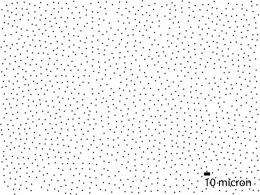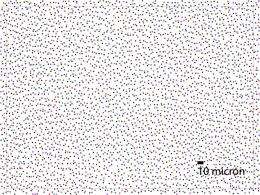Chickens 'one-up' humans in ability to see color

(PhysOrg.com) -- Researchers at Washington University School of Medicine in St. Louis have peered deep into the eye of the chicken and found a masterpiece of biological design.
Scientists mapped five types of light receptors in the chicken's eye. They discovered the receptors were laid out in interwoven mosaics that maximized the chicken's ability to see many colors in any given part of the retina, the light-sensing structure at the back of the eye.
"Based on this analysis, birds have clearly one-upped us in several ways in terms of color vision," says Joseph C. Corbo, M.D., Ph.D., senior author and assistant professor of pathology and immunology and of genetics. "Color receptor organization in the chicken retina greatly exceeds that seen in most other retinas and certainly that in most mammalian retinas."
Corbo plans follow-up studies of how this organization is established. He says such insights could eventually help scientists seeking to use stem cells and other new techniques to treat the nearly 200 genetic disorders that can cause various forms of blindness.
Scientists published their results in the journal PLoS One.

Birds likely owe their superior color vision to not having spent a period of evolutionary history in the dark, according to Corbo. Birds, reptiles and mammals are all descended from a common ancestor, but during the age of the dinosaurs, most mammals became nocturnal for millions of years.
Vision comes from light-sensitive photoreceptor cells in the retina. Night-vision relies on receptors called rods, which flourished in the mammalian eye during the time of the dinosaurs. Daytime vision relies on different receptors, known as cones, that are less advantageous when an organism is most active at night.
Birds, now widely believed to be descendants of dinosaurs, never spent a similar period living mostly in darkness. As a result, birds have more types of cones than mammals.
"The human retina has cones sensitive to red, blue and green wavelengths," Corbo explains. "Avian retinas also have a cone that can detect violet wavelengths, including some ultraviolet, and a specialized receptor called a double cone that we believe helps them detect motion."
In addition, most avian cones have a specialized structure that Corbo compares to "cellular sunglasses": a lens-like drop of oil within the cone that is pigmented to filter out all but a particular range of light. Researchers used these drops to map the location of the different types of cones on the chicken retina. They found that the different types of cones were evenly distributed throughout the retina, but two cones of the same type were never located next to each other.

"This is the ideal way to uniformly sample the color space of your field of vision," Corbo says. "It appears to be a global pattern created from a simple localized rule: you can be next to other cones, but not next to the same kind of cone."
Corbo speculates that extra sensitivity to color may help birds in finding mates, which often involves colorful plumage, or when feeding on berries or other colorful fruit.
"Many of the inherited conditions that cause blindness in humans affect cones and rods, and it will be interesting to see if what we learn of the organization of the chicken's retina will help us better understand and repair such problems in the human eye," Corbo says.
More information: Kram YA, Mantey S, Corbo JC. Avian cone photoreceptors tile the retina as five independent, self-organizing mosaics. PLoS One, Feb. 1, 2010.
Provided by Washington University School of Medicine


















